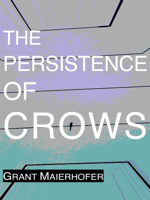 In keeping with the theme of re-creation – that is, making explicit use of another artist’s work in the creation of a new, “original” piece of art – it is interesting to look back to another time when technological advancements brought about new opportunities for audio reproduction and in so doing, raised questions of ownership, copyright, and, yes, artistic ethics.
In keeping with the theme of re-creation – that is, making explicit use of another artist’s work in the creation of a new, “original” piece of art – it is interesting to look back to another time when technological advancements brought about new opportunities for audio reproduction and in so doing, raised questions of ownership, copyright, and, yes, artistic ethics.
Today we think of sampling as copying and pasting a segment of digital waveform within your favorite audio program or, if you must do it the hard way, recording an excerpt directly from an analog medium. In the earliest decades of the twentieth century, Italian Futurist and would-be composer Luigi Russolo experimented with much more primitive approaches to audio sampling. He devised contraptions he called Intonarumori, or noise intoners, with the goal of reproducing everyday noises – especially industrial and urban sounds – on cue, allowing for real-time manipulation of their tone and rhythm. The machines carried names like “Whistler”, “Croaker”, and “Gurgler”, and their insides typically consisted of metal strings vibrated through manipulation of levers, gears, and cranks. It was Russolo’s crude way of sampling the auditory environment of the city. Here’s an excerpt of the noise intoners in action:
Audio clip: Adobe Flash Player (version 9 or above) is required to play this audio clip. Download the latest version here. You also need to have JavaScript enabled in your browser.
At the premiere concert of the Intonarumori in Milan, a fight broke out between traditionalists and Futurists, including notable partisans Filippo Marinetti and Umberto Boccioni. Marinetti made no secret of his disdain for those who were nonplussed by this new technology, likening demonstrations to “showing the first steam engine to a herd of cows.”
Sadly, none of Russolo’s original instruments have survived. Schemata for the machines do exist, though, and others have constructed their own Intonarumori, as in this performance (which I suspect had a slightly less explosive reception):
Alright, that’s not real sampling, I hear you protesting; Russolo and the other noise intoners are simply emulating the sounds we hear when we walk down the street, not capturing and reproducing them as they actually occurred. Next up I’ll discuss early experiments with true sampling and the advent of turntablism.
As promised:
::The Early History of Turntablism: Hindemith, Toch, and Cage::








